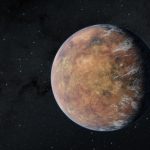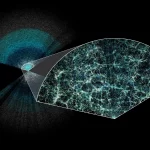Key Takeaways:
- A study discovered striking similarities between the network of neurons in the human brain and the vast cosmic web of galaxies, despite a size difference spanning 27 orders of magnitude.
- Both systems display analogous principles of organization, connectivity, and structure, suggesting a shared basis for their self-organization despite operating on vastly different scales.
- Comparable ratios of passive materials (water in the brain, dark energy in the Universe) and mass distribution percentages (galaxies/neurons) hint at intriguing parallels between the two systems.
- The study unveiled similar density fluctuations in both the brain’s cerebellum neuronal network and the cosmic web, suggesting a mirroring of spatial distribution patterns.
- Despite its astounding complexity, the brain operates on remarkably low power consumption, highlighting its immense computational prowess compared to even the most advanced supercomputers.
In a recent study, scientists have unearthed striking parallels between two vastly distinct systems: the intricate network of neuronal cells within the human brain and the expansive cosmic web of galaxies.
Researchers conducted a thorough examination of both systems, scrutinizing their structures, forms, memory capabilities, and other attributes. Their quantitative analysis unveiled that disparate physical processes can yield structures exhibiting similar levels of complexity and organization, notwithstanding their vast differences in size, spanning 27 orders of magnitude.
This remarkable study was spearheaded by Italian experts hailing from divergent fields—astrophysicist Franco Vazza from the University of Bologna and neurosurgeon Alberto Feletti from the University of Verona.
In their
paper, the scientists remarked, “The intriguing degree of similarity unveiled by our analysis suggests that the self-organization of these complex systems is likely governed by akin principles of network dynamics, despite their radically different scales and operative mechanisms.”
A notable revelation from the study was the analogy drawn between the brain’s neuronal network and a universe unto itself, comprising approximately 69 billion neurons—comparable to the web of at least 100 billion galaxies within the observable universe.
Furthermore, both networks—neurons and galaxies—exhibit a defined structure comprising nodes interconnected by filaments. Analysis of the average number and clustering of connections within nodes revealed discernible “agreement levels” in connectivity, indicative of analogous underlying physical principles, as noted by Feletti.

Additionally, intriguing parallels emerge in the composition of these structures. While about 77 percent of the brain consists of water, approximately 70 percent of the Universe is permeated by dark energy—passive components with indirect roles in their respective systems.
Conversely, around 30 percent of the mass in each system comprises galaxies or neurons.
Moreover, scientists identified a striking resemblance between the fluctuations in matter density in brains and those in the cosmic web.
“We employed a technique frequently utilized in cosmology to study the spatial distribution of galaxies, calculating the spectral density of both systems,” explained Vazza in a press release. “Our analysis revealed a congruent progression in the distribution of fluctuations within the cerebellum neuronal network, ranging from 1 micrometer to 0.1 millimeters, mirroring the distribution of matter in the cosmic web albeit on a larger scale spanning 5 million to 500 million light-years.”
Explore the comprehensive findings in the study titled “The Quantitative Comparison Between the Neuronal Network and the Cosmic Web,” recently published in Frontiers in Physics.
In the words of Michio Kaku, “It is fascinating to contemplate that atop our shoulders rests the most intricate entity crafted by Mother Nature in the known universe. To find a planet potentially harboring life and intelligence, one must journey at least 24 trillion miles to the nearest star. Remarkably, our brain consumes a mere 20-30 watts of power, yet surpasses the computational capabilities of even the most advanced supercomputers.”


